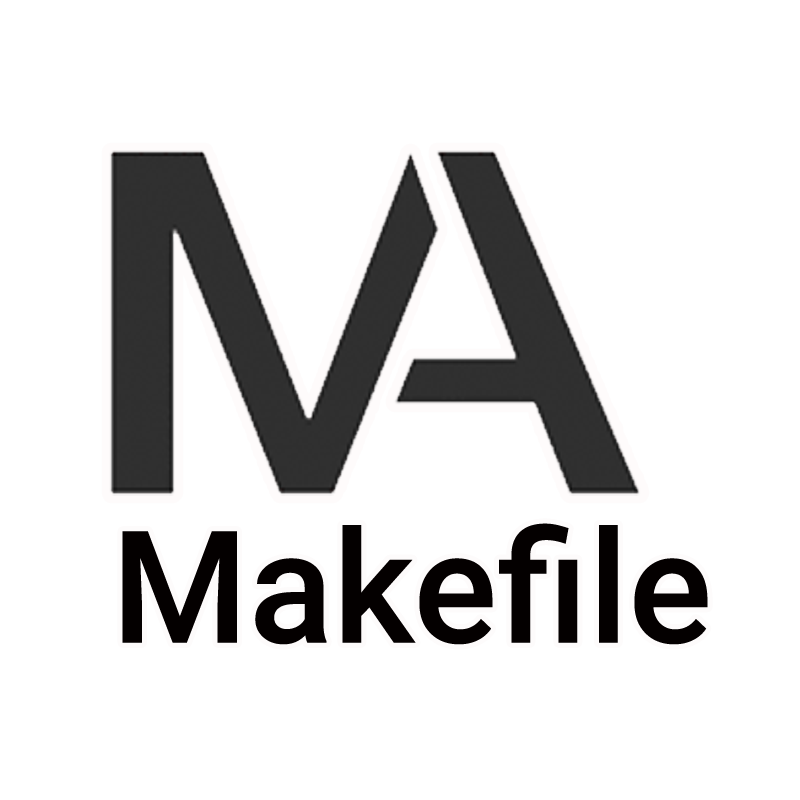A Detailed Guide to Makefiles: Using Them for Scripting and Tooling

MontaF - Sept. 12, 2024

Makefiles are an essential tool for automating tasks, managing complex builds, and creating reproducible development environments. Originally used for compiling code in languages like C and C++, Makefiles can be used for much more than just compiling code. They offer a robust way to organize tasks, manage dependencies, and automate repetitive actions such as building, testing, and deployment in any development environment.
In this article, we will cover:
- What a Makefile is
- Installing Make and running a Makefile
- Basic syntax of a Makefile
- Variables and functions in Makefiles
- Automating common tasks with Makefiles
- Conditional and looping constructs in Makefiles
- Advanced techniques for scripting and tooling
1. What is a Makefile?
A Makefile is a special file that contains a set of instructions used by the make utility to build and manage projects.
It helps automate tasks and defines rules for how to build targets, such as compiling code, packaging files, or running scripts.
A Makefile organizes commands in a structured way and manages the dependencies between tasks.
A typical Makefile might include:
- Targets: Specific goals to achieve (like building a program or running tests).
- Rules: Define the steps to achieve a target.
- Dependencies: Files or other targets that need to be up-to-date before executing a rule.
2. Installing Make and Running a Makefile
make is usually pre-installed on Unix-based systems like Linux and macOS.
If you're on Windows, you can install make through tools like MSYS2, Cygwin, or WSL (Windows Subsystem for Linux).
Running a Makefile
To run a Makefile, you just need to type make in the directory where your Makefile is located:
make
By default, make looks for a file named Makefile or makefile. You can specify a different filename using:
make -f custom_makefile
3. Basic Syntax of a Makefile
A Makefile consists of rules, which tell make how to build a target. Each rule has three main parts:
- Target: The goal that
makeshould achieve (e.g., a compiled file or an action). - Dependencies: Files or targets that must be updated before building the target.
- Commands: The shell commands that
makeshould run to build the target.
The basic structure of a rule looks like this:
target: dependencies
command # indented by a tab
Example:
hello: hello.o gcc -o hello hello.o hello.o: hello.c gcc -c hello.c
Here, the target hello depends on the object file hello.o, and the command gcc -o hello hello.o builds the final executable.
Running the Makefile:
make hello
This will check if hello.o is up-to-date and then compile the hello executable if needed.
4. Variables and Functions in Makefiles
You can use variables in Makefiles to avoid repetition and simplify code.
Defining and Using Variables
CC = gcc
CFLAGS = -Wall
hello: hello.o
$(CC) $(CFLAGS) -o hello hello.o
hello.o: hello.c
$(CC) $(CFLAGS) -c hello.c
Here, CC is a variable for the compiler and CFLAGS is for compiler flags. You can reference variables using $(VARIABLE_NAME).
Functions in Makefiles
Makefiles also support functions to manipulate text or perform advanced tasks. Some common functions include:
$(shell command): Executes a shell command and returns its output.
Example:
DATE := $(shell date)
This stores the current date in the variable DATE.
$(wildcard pattern): Returns a list of files matching a pattern.
Example:
SOURCES := $(wildcard *.c)
This sets the variable SOURCES to all .c files in the current directory.
5. Automating Common Tasks with Makefiles
Makefiles are not limited to just compiling code. You can use them for automating any kind of scripting and tooling tasks.
Below are some examples of how to use Makefiles in various contexts.
Example 1: Running Tests
You can automate running unit tests or integration tests with a simple Makefile:
.PHONY: test
test:
pytest tests/
When you run make test, it will execute the pytest command and run all tests in the tests/ directory.
Example 2: Linting Code
You can also add a linting task to your Makefile for checking code quality:
.PHONY: lint
lint:
flake8 src/
When you run make lint, it will check the code in the src/ folder using the flake8 linter.
Example 3: Building Docker Containers
You can define rules to build Docker containers:
.PHONY: docker-build
docker-build:
docker build -t myapp:latest .
Running make docker-build will execute the Docker build command.
6. Conditional and Looping Constructs in Makefiles
Makefiles support conditionals and simple loops, which can be useful for complex build logic.
Conditional Statements
You can use ifeq and ifneq to check conditions:
ifeq ($(OS),Windows_NT)
RM = del
else
RM = rm
endif
This checks if the operating system is Windows and sets the RM variable accordingly.
Loops
You can use foreach to loop over a list of items:
FILES := file1.txt file2.txt file3.txt
.PHONY: clean
clean:
$(foreach file,$(FILES),rm -f $(file);)
This removes all files listed in FILES.
7. Advanced Techniques for Scripting and Tooling
Example 1: Automating Virtual Environment Setup
You can use a Makefile to set up and activate a Python virtual environment, install dependencies, and more.
.PHONY: venv install
venv:
python3 -m venv venv
install: venv
source venv/bin/activate && pip install -r requirements.txt
Here, make install will set up the virtual environment and install required packages.
Example 2: Compiling and Packaging a Project
You can automate the build and packaging of your project. For example, using tar to create an archive of your project:
.PHONY: package
package:
tar -czf project.tar.gz src/ docs/ Makefile
Running make package will compress the project files into a project.tar.gz archive.
Example 3: Custom Help Commands
You can define a help command to display available Makefile commands:
.PHONY: help
help:
@echo "Available commands:"
@echo " make build Build the project"
@echo " make test Run tests"
@echo " make clean Clean up"
Running make help will print a list of available commands.
8. Best Practices for Writing Makefiles
- Use
.PHONYfor non-file targets: Always declare your custom tasks (liketest,clean, etc.) as.PHONYto avoid conflicts with files that may have the same name. - Organize tasks logically: Group related tasks (e.g., build, test, deploy) into different sections and use comments to explain the purpose of each section.
- Leverage variables: Use variables for frequently used commands, paths, and options to avoid duplication and simplify changes.
- Use descriptive targets: Give meaningful names to your targets. This helps other developers understand the Makefile easily.
- Test your Makefile: Ensure that your Makefile is cross-platform (Linux, macOS, Windows) if you expect it to be used on different operating systems.
Conclusion
Makefiles provide a powerful way to automate tasks, manage complex dependencies, and build reproducible workflows in software projects.
Originally designed for compiling code, Makefiles are now used to automate a wide range of tasks, from testing and linting to Docker container management and virtual environment setup.
By understanding the basic structure, variables, functions, and advanced techniques in Makefiles, you can create scripts that streamline your development process and help manage your project more efficiently.
If you need more detailed examples or explanations on specific topics, feel free to ask!


